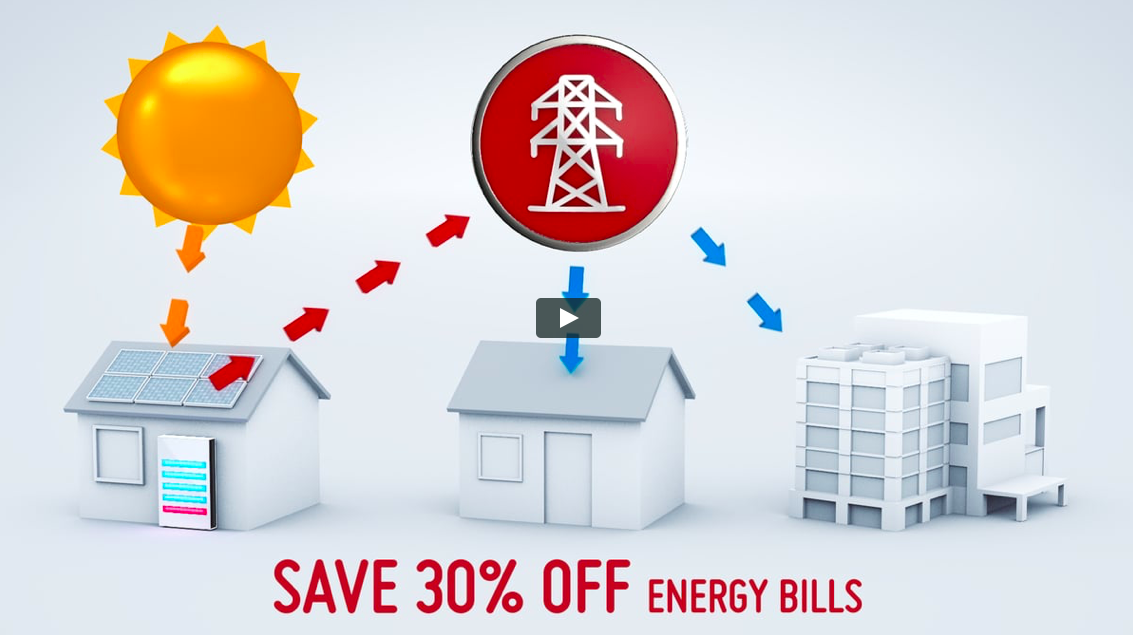The collaboration between the South Austrialia (SA) government and Tesla on the 100MW/129MWh Hornsdale battery is set to be expanded to the realm of distributed generation and storage. A bold virtual power plant (VPP) project is set to take shape on the back of a collaboration announced on Sunday, which could have a significant impact on energy transition debates in the state, nationally and even globally.
For those skeptical of the move, the VPP scheme could be seen as a reboot of solar leasing in Australia, with storage, a social component and energy sharing added to the mix – and one that gives vast market share to Tesla. For others, the collaboration could be seen as being a ‘game changer’, in building a distributed generation and storage network with the ability to deliver dispatchable, clean energy, cheaper than grid prices, and in a model that puts the individual household at the center.
Some of the key details, set out on a dedicated project webpage, are as follows:
- Phase one, the trial phase, will see 5 kW/13.5 kWh rooftop solar+storage (respectively) systems provided to Housing Trust (state/social housing) properties for no cost on an opt-in basis.
- Tesla will facilitate the installation of the systems, and provide its Powerwall 2, and be responsible for the interaction, in most cases, with the households before billing begins.
- A Program Retailer will be selected to administer the billing of what could be described as a storage+solar lease, with pricing targeted to be 30% below the average residential retail price in the state of $0.40/kWh. Housing Trust homes not suitable for rooftop solar can chose to sign with the Program Retailers, and receive the same price reduction as the VPP homes.
- In phase two, the offering will be extended to a further 24,000 Housing Trust properties.
- The third, and final, phase will see a “similar offering” made available to all South Australian households. In total, at least 55,000 homes have been targeted for the VPP. In this final phase, and presumably on an ongoing basis, options to allow for the purchase of all or part of the system upfront will be offered.
- The distributed battery systems will participate in and generate revenues from SA’s grid services markets, helping to stabilize the electricity netowrk. The cumulative solar+storage capacity will help meet peak and high electricity demand periods – to be managed by Tesla.
- The batteries will be able to provide backup power in the event of grid outages.
- The full investment required for the program has been set at $800 million – with the state looking for private investment for the bulk of the funds.
- The project has received a $2 million grant and $30 million loan from SA’s $150 million Renewable Technology Fund – bids for which closed in September 2017.
“It does two things,” said SA Premier Jay Weatherill when launching the VPP. “It obviously reduces the power bills for the 50,000 people that are associated with this scheme, but it also reduces power prices for the rest of the system because what we’re effectively doing is putting another power plant into the South Australian energy market. The extra competition drives down prices for everyone.”
The SA government released economic modelling from Frontier Economics which found that the program, once at capacity in 2021, will result in $180 million in electricity savings in the state.
“What is unique with this development is that it really has been brought together in a coherent plan and executed extremely quickly to deal with the challenges that South Australia faces,” said Danny Price, the Managing Director at Frontier Economics – in a video released by the government promoting the development.
“We’ve really not seen anything like this, at this scale, anywhere else in the world,” Price added.
The SA government’s Tesla VPP goes further than plans announced by the state opposition last year, to develop a $200 million to fast track the development of a new interconnector linking the SA grid to eastern-state grids. Additionally, the opposition had pledged $100 million household battery fund, which would provide battery storage grants of around $2,500 to 40,000 to households with assets and household income below a certain point.
The incumbent government’s VPP was announced the day that the state opposition leader Steven Marshall launched his party’s election campaign.
Shortly before 9am Monday morning, SA Premier Wetherill tweeted that over 6,500 homes had already registered interest online to take part in the VPP.
This content is protected by copyright and may not be reused. If you want to cooperate with us and would like to reuse some of our content, please contact: editors@pv-magazine.com.




Are the 800,000 million correct? I think it should read 800 million?!
Dear Max,
Thanks for pointing out the discrepancy. It has been amended!
Becky